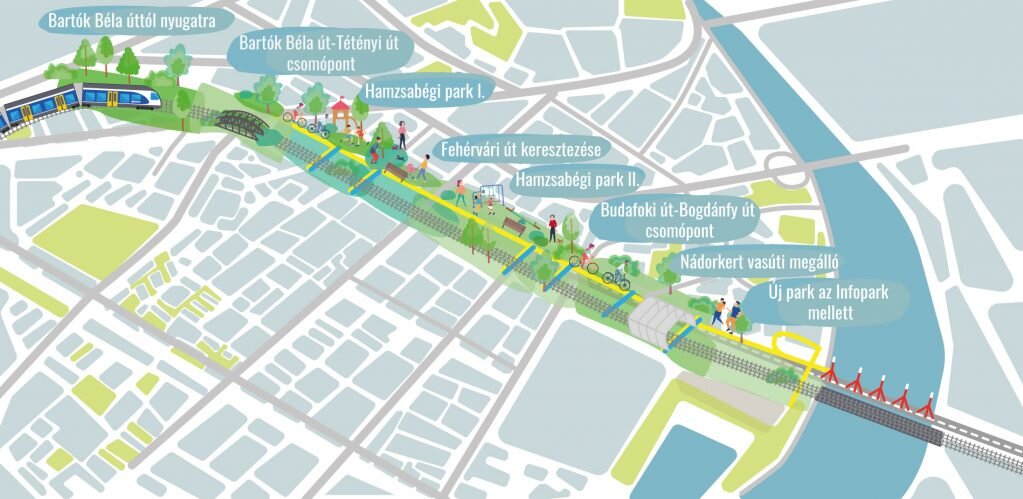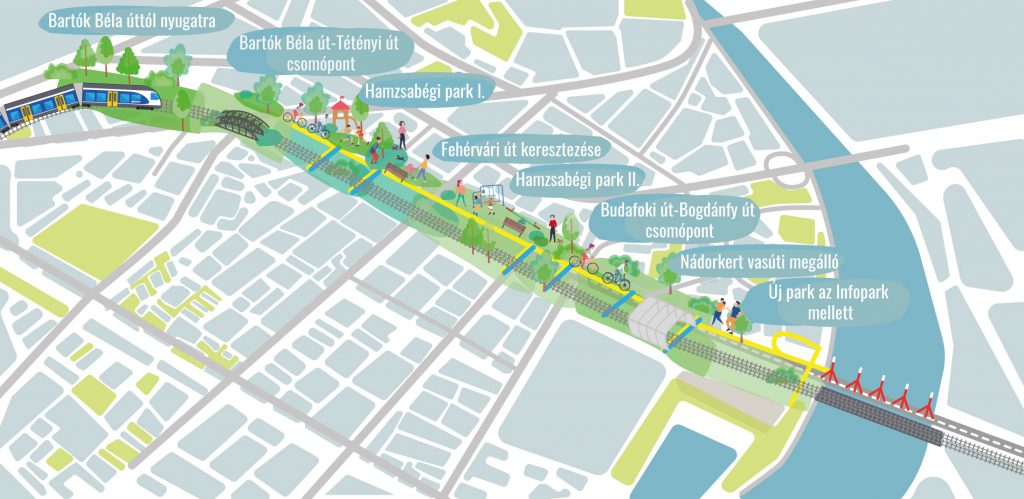Planners will start work on a green corridor around southern Budapest once locals have selected their preferred choice to help ease traffic congestion and decrease pollution. A fast rail link between Kelenföld and Népliget will allow public transport to be more integrated and more trains to serve the suburbs.
The aim of the southern ring is to create a balance between community, bicycle and car transport. This is also linked to the construction of the new Southern Danube Bridge, P+R locations, and the development of HÉV suburban trains and main rail. Locals should be able to reach our destination faster, more comfortably and with fewer transfers.
With trains zipping between Kelenföld in south Buda and Népliget in south Pest, suburban travel will be eased by three metro lines (M3, M4 and the future M5 resulting from these developments). Nearly a million people from the outskirts and suburbs come to Budapest every day, most by car, and solving this is one of the biggest challenges in the capital today.
Sustainable rail
“Increasing the use of railways and the capacity of the ring lines across the city is essential for a sustainable and environmentally friendly transport system to work,” says Budapest Development CEO Dávid Vitézy. “The railway must become integral to urban transport, which requires the appropriate connections.”

The Hungarian public can vote for their choice by 15 November. Planning will take place in several stages – for the time being, the focus is on Buda.
The aim is for the area to become a green corridor for cyclists and pedestrians, which runs along Budaörsi út to Kopaszi-gát amid a neat, wooded, landscaped environment. Thanks to this development, a new interlinked cycling axis from Hamzsabégi út to Rákóczi Bridge can be created, linked in turn to the cycle path running along Buda’s upper embankment.




